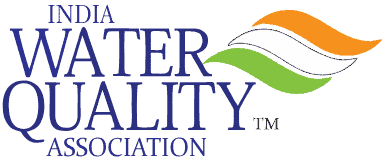About IS 16240 : 2023
IS 16240:2023 is the latest Indian Standard for Reverse Osmosis (RO) Based Point of Use (PoU) Water Treatment System for Drinking Purposes. It was published by the Bureau of Indian Standards (BIS) on March 15, 2023 and supersedes the previous standard, IS 16240:2015.
The standard specifies the requirements for RO PoU water treatment systems, including their design, materials, construction, performance, testing, labeling, and packaging. It is applicable to all manufacturers, importers, and sellers of these systems in India.
The purpose of the standard is to ensure that RO PoU water treatment systems are safe and effective for producing drinking water that meets the Indian drinking water standards. RO PoU systems are used to remove contaminants from water, including bacteria, viruses, and heavy metals. They are often used in homes, offices, and schools to provide a safe and reliable source of drinking water.
2023 changes and uses:
The 2023 revision of IS 16240 includes a number of important changes, including:
- Anyone new to the water industry
- Non-technical employees
- Everyone in the company!
- President/Owner/General Manager
- Sales/Marketing
- Customer Service/ Office
- Purchasing/Buyer
- Production/Plant
- Engineers
These changes will help to ensure that RO PoU systems in India are safe and effective for producing drinking water.
IS 16240:2023 is an important standard for anyone involved in the manufacture, sale, or use of RO PoU water treatment systems in India. It is also a valuable resource for consumers who are considering purchasing or using an RO PoU system.
RO PoU systems are a popular choice for water treatment in India because they are relatively affordable and easy to install. They are also effective at removing a wide range of contaminants from water. However, it is important to note that RO PoU systems can also produce wastewater, which must be disposed of properly.
RO PoU systems are typically used in conjunction with other water treatment methods, such as pre-filtration and post-filtration. This helps to ensure that the system produces water that is safe and suitable for drinking.
About IS 10500 : 2015
IS 10500:2015 is the Indian Standard for Drinking Water Specification. It was published by the Bureau of Indian Standards (BIS) on June 1, 2015 and supersedes the previous standard, IS 10500:2012.
The standard specifies the requirements and methods of sampling and testing of drinking water. It covers a wide range of parameters, including physical, chemical, and biological characteristics.
The purpose of the standard is to ensure that drinking water in India is safe and suitable for human consumption. It is applicable to all water suppliers, both public and private, in India.
IS 10500:2015 is an important standard for ensuring the safety and quality of drinking water in India. It is also a valuable resource for consumers who want to learn more about the quality of their drinking water.
- New requirements for the sampling and testing of drinking water.
- New requirements for the treatment of drinking water.
- New requirements for the monitoring of drinking water quality.
- President/Owner/General Manager
- New requirements for the reporting of drinking water quality data to the public.
IS 10500:2015 is a crucial standard for everyone involved in the supply or treatment of drinking water in India, as well as for consumers who want to learn more about the safety and quality of their drinking water.
This standard is used by a variety of stakeholders to ensure that drinking water in India meets the Indian standards and is safe for human consumption.
About IS 14724
IS 14724:1999 is the Indian Standard for Water Purifiers with Ultra-violet Disinfection. It was published by the Bureau of Indian Standards (BIS) in 1999.
The standard specifies the requirements for the design, materials, construction, performance, testing, labeling, and packaging of water purifiers with UV disinfection. It is applicable to all manufacturers, importers, and sellers of these systems in India.
The purpose of the standard is to ensure that water purifiers with UV disinfection are safe and effective for producing drinking water that meets the Indian drinking water standards. UV disinfection is a process that uses ultraviolet light to kill microorganisms in water. It is a popular method of water purification because it is effective at killing a wide range of microorganisms, including bacteria, viruses, and cysts.
IS 14724:1999 is an important standard for ensuring the safety and quality of drinking water from UV water purifiers in India. It is also a valuable resource for consumers who are considering purchasing or using an UV water purifier.
- The UV lamp must be able to produce a UV dose of at least 16 mJ/cm² at a distance of 1 cm from the lamp.
- The UV lamp must be enclosed in a chamber that is made of a material that is transparent to UV light.
- The UV chamber must be designed to prevent the water from bypassing the UV lamp.
- The water purifier must be equipped with a system to monitor the UV lamp and to shut off the water flow if the lamp fails.
- The water purifier must be labeled with information about the UV lamp, such as its type, power rating, and operating life.
IS 14724:1999 is an important standard for ensuring the safety and quality of drinking water from UV water purifiers in India. Consumers should look for the BIS certification mark on UV water purifiers to ensure that they meet the Indian standards.
